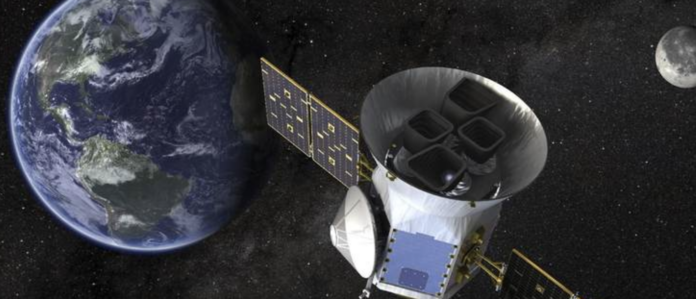The focus of space news on Thursday was largely focused on the SpaceX Starship launch (and the “rapid, unscheduled, disassembly” that followed), but skywatchers wondered what happened to the 660-pound decommissioned NASA satellite, which was expected to crash to Earth by Wednesday.
The backstory:
RHESSI, a 660-pound spacecraft that has been orbiting the Earth for more than 20 years. It was used to monitor solar flares, clouds of plasma emitted from the sun and remained in orbit even after being decommissioned in 2018.
Here’s a little more information about the satellite.
NASA’s RHESSI Satellite studied the Sun for nearly two decades from Earth’s orbit. It was launched in 2002, decommissioned in 2018, and finally returned to our atmosphere this past week.
RHESSI, which was launched into orbit by the Pegasus rocket XL, was designed to study coronal mass eruptions (CMEs) and solar eruptions. It used a spectrometer to detect high-energy X rays and Gamma Rays before our atmosphere could block them.
The satellite has observed over 100,000 X-rays flashes in its lifetime. It also helped astronomers gain a better knowledge of the shape of the Sun.
The headlines on Wednesday warned about its imminent “crash,” yet the stories noted that there was no need to panic, as the odds of harming yourself by its return are only 1 in 2,500.
In a blog posting, NASA explained that the satellite would have been mostly oxidized when it reentered Earth’s atmosphere. The reentry site has not been revealed yet, but NASA has said that the chances of someone being injured are low. The risk that anyone on Earth will be injured is very low – approximately 1 in 2,467, wrote the space agency.
What are you going do?
The satellite was still missing when I checked on Thursday morning. We were told that it wasn’t the cause of the bright flash seen over Ukraine last Wednesday.
NASA has denied that a large flash of light seen above Ukraine is a satellite falling down to Earth and suggests it’s a meteorite.
Serhiy Poko, the head of Kyiv’s city military administration said that a light appeared over the capital at 10pm local. This triggered an immediate air raid alert. Popko said that the ‘air defence was not operating’
BBC reported that Popko had shared some preliminary findings which showed “this phenomenon was caused by a Nasa satellite falling to Earth.”
The military official might have thought the light was a 600-pound craft, about the size and shape of a shipping box. NASA had warned that the spacecraft would reenter the atmosphere at 9.30pm ET in 2018, after being retired due to faulty communication.
NASA confirmed to the news outlet, however, that the satellite is still orbiting.
RHESSI is back on Earth, and conveniently over the Sahara Desert.
The retired NASA Reuven Ramaty High Energy Solar Spectroscopic Imager spacecraft (RHESSI), almost 21 years since its launch, re-entered Earth’s atmosphere on Wednesday April 19 at 8:21 p.m. ET. RHESSI was in low-Earth orbit from 2002 until its decommissioning last year. It observed solar flares, which helped scientists better understand how these powerful bursts are produced.
The Department of Defense confirmed the 660-pound satellite re-entered atmosphere at 21.3 degrees north longitude and 26 degrees east latitude. NASA had expected that most of the spacecraft would burn up in the atmosphere as it traveled, but some components should survive reentry.




